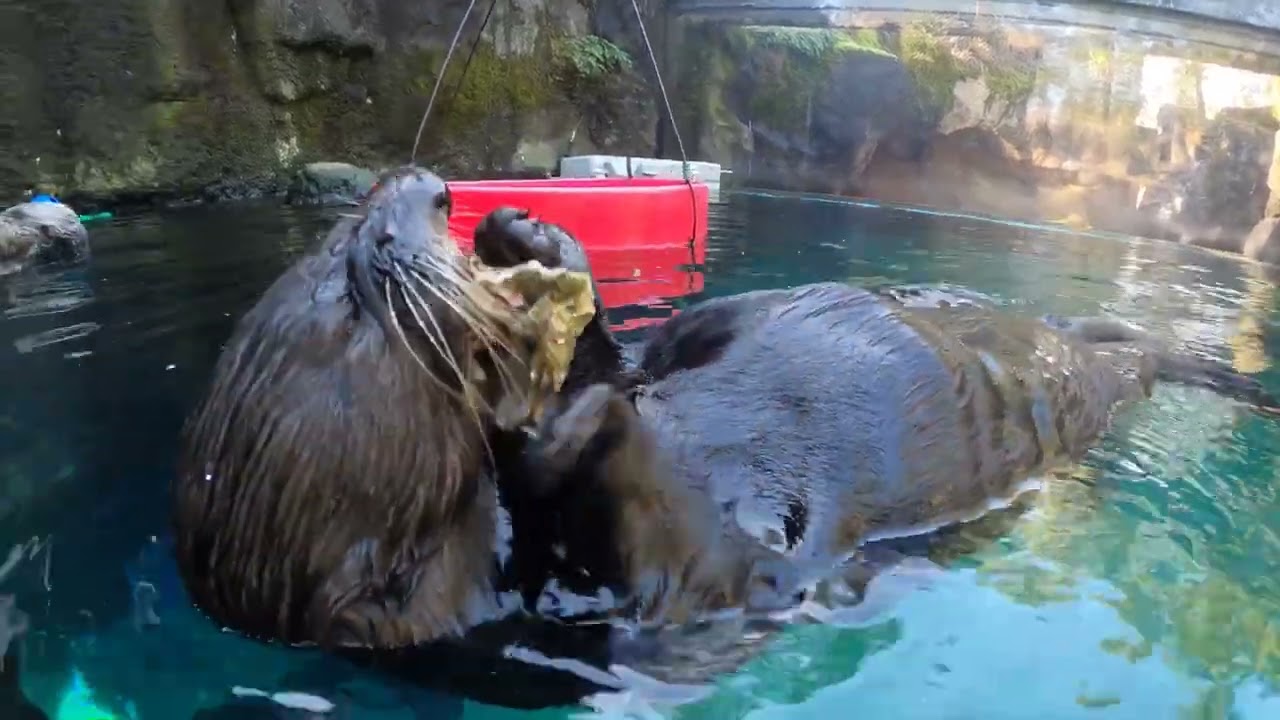– The behavioral patterns of otters with oysters in their aquatic environment
– The ecological importance of otters in maintaining healthy marine ecosystems
– Strategies for wildlife conservation focusing on otters and their habitats
– The impact of human activities on otter populations and marine life
– The role of zoo management in educating the public about otter conservation
Otters exhibit fascinating behavior when interacting with their aquatic environment, particularly in handling and consuming oysters. These mammals are known for their intelligence and skill, using rocks as tools to crack open the hard shells of oysters. This behavior is remarkable for its display of tool use among non-human animals and its importance in maintaining the balance within marine ecosystems.
Otters play a vital role in their habitats. By preying on oysters and other shellfish, they help control the population of these species, preventing overgrazing of seagrass beds, which are crucial for the health of marine environments. This balance ensures the sustainability of these ecosystems, supporting a diverse range of marine life.
However, otter populations face threats from various human activities, including pollution, habitat destruction, and overfishing, which reduce their food sources. These challenges underscore the importance of effective wildlife conservation strategies to protect otters and their habitats. Conservation efforts must focus on habitat preservation, pollution control, and the establishment of protected marine areas to ensure the survival of these critical species.
Zoos and aquariums play a significant role in otter conservation through educational programs. By showcasing otters’ behavior and ecological roles, including their unique way of cracking oysters in water, these institutions raise awareness about the importance of marine conservation. They also contribute to conservation research, breeding programs, and rehabilitation efforts for injured or orphaned otters, highlighting the interconnectedness of zoo management with broader conservation goals.
Human impact on marine life is profound, with activities such as coastal development, water pollution, and climate change posing significant risks to otter populations and their habitats. It’s crucial to recognize the effects of our actions and implement sustainable practices to minimize harm to these vital ecosystems. Public support and involvement in conservation initiatives are essential for protecting otters and preserving marine biodiversity.
The fascination with boisterous otters cracking oysters in the water extends beyond their cute and playful image. It delves into the heart of environmental stewardship, highlighting the complex interactions within marine ecosystems and the delicate balance maintained by species like the otter. Through education, conservation, and sustainable practices, there is hope for the future of otters and the rich, diverse marine habitats they inhabit. Engaging with these efforts is paramount to ensuring a healthy planet for future generations.
*****
Source Description
Set the oyster bar to ottermatic
Sea otters use rocks as tools to crack open shellfish and eat the meat inside. Otterly ingenious!


